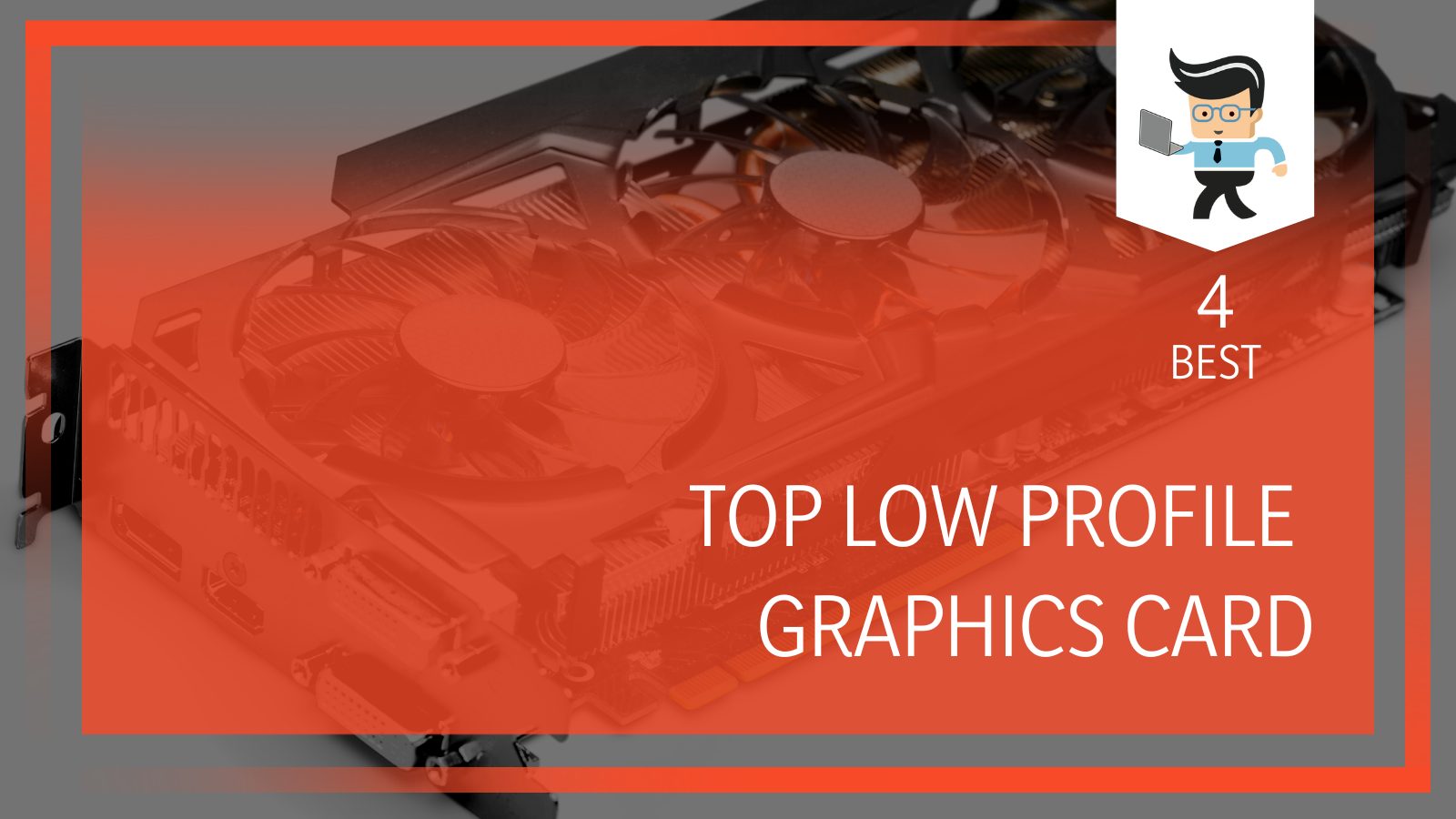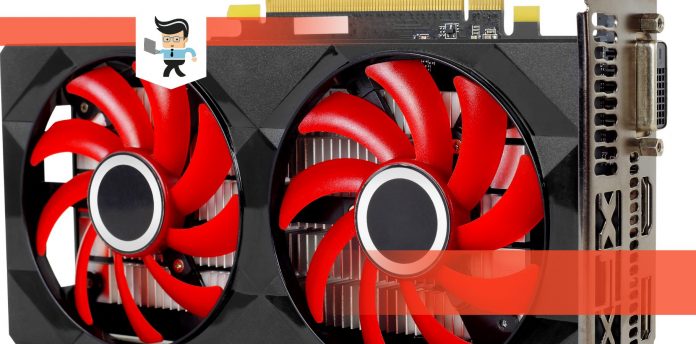If you are trying to buy a low profile graphics card, what is the best option for you? As small form factors (SFF) and HT (home theater) PCs continue to become more popular, getting the best low profile graphics card is important.

More of us need computers to be scaled down in physical size so that they fit into smaller spaces, we can add multiple monitors, and need desktops that are more portable. Having a low profile graphics card can help you to save space when you have a low-profile GPU.
With these smaller GPUs, you need cards that are slimmer and half height. Here are some of our choices for the best low profile GPUs.
Contents
Comparison Table
| Product | Pros | Cons |
| ZOTAC GeForce GTX 1050 |
|
|
| EVGA GeForce GT 1030 SC |
|
|
| MSI GTX 1050 TI 4GT LP Graphic Cards |
|
|
| Gigabyte GeForce GT 1030 GV |
|
|
Best Low Profile GPUs: Our Overviews
When it comes to low profile GPUs, there are a few different options that stand out. They all offer something different and unique, so it is important to look at them individually.
1. ZOTAC GeForce GTX 1050
– Specifications:
Stream Processors: 640 CUDA Cores
Interface: PCI Express 3.0 x16
Supported APIs: DirectX: 12
OpenGL: 4.5
Memory Speed: 7 Gb/s
Memory Configuration: 2 GB
Memory Interface: GDDR5
Memory Interface Width: 128-Bit
Display Connectors: 1 x DisplayPort 1.4, 1 x HDMI 2.0b and 1 x DVI-D DL
Digital Resolution: 7680 x 4320 at 60 Hz
– Overview:
The first card to look at is the Zotac GeForce GTX 1050. If you have ever used a GTX card before, you know that it offers some great performance. It will offer you an extremely small form factor while still having the power to push 1080p gaming performance.
I like this one because it doesn’t call for any additional power connections, as it gets all that it needs from the PCI Express x 16 slot. This will help to keep your other resources free, which is important when building low profile machines.
It can also be plugged into existing machines and used to help support older graphics cards. If you aren’t looking to build a new computer but want to support a system that has degraded over time, this may be your best choice.
Price wise, the Zotac is in line with many of the other cards on the list. For its size, it is actually at a bargain price because it is smaller than most of the other cards. One of the biggest problems with this card is that while it is a low profile graphics card, it is still full-height, which means it won’t fit into every system. Note that you won’t have many options if this is the case.
Overall, the Zotac GeForce GTX Mini is a great option for those who don’t want to spend too much and are instead looking for an entry level GPU. It is small, performs pretty well, and will give you some really good gaming results. Are there other cards on the list that are better? There are, but you won’t find them in this price range.

Pros:
The smallest GTX 1050 on the market; extremely affordable; decent performance; no PCI Express power connections needed; almost always available
Cons:
Still full height; doesn’t always maintain 60fps; doesn’t perform consistently at high settings
2. EVGA GeForce GT 1030 SC
– Specifications:
Memory: 2GB GDDR5 64bit memory
Low Profile Design: 150 mm card length
Core Clock: 1252 MHz in OC Mode and 1227 MHz in Gaming Mode
Boost Clock: 1506 MHz in OC Mode and 1468 MHz in Gaming Mode
Compatibility: 1 x Dual-Link DVI-D 1 x HDMI 2.0b
Stream Processors: 384
Interface: PCI Express 3.0 x4
One-click overclocking via AORUS Graphics Engine
– Overview:
EVGA GeForce FT is a good low profile graphics card. When you are playing competitive games that it was designed for, it performs admirably. There are some games where it will not perform as well as we would hope.
However, for the low price and the power-friendly build, it makes it one of the most accessible options for anyone who needs a low profile graphics card. If you have an available PCIe slot, it is worth a look.
The EVGA GeForce GT 1030 is a bit of a dated card at this point, but that doesn’t mean that it isn’t a good option for people who need something cheap. Most recommendations will start around $90.
Since this is an older card, we have been able to track how it performs and people seem to be quite happy with how it has held up. There isn’t much talk about degradation or a lack of performance.
The TDP is a lowly 30W, so it doesn’t have a lot of power consumption. This will help to keep it cooler and provide better power to other parts of your machines. The EVGA GeForce GT 1030 is composed of 1.8 billion transistors but it stays small at just 70mm². This is partly because it used 14nm FinFET process in manufacturing. It comes with three Streaming Multiprocessors, which help with creating realistic, beautiful images.

Pros:
Extremely affordable, good performance in eSports games; good performance in 11-DirectX9/11-based games; low profile form factor; single slot utility; sales quite often
Cons:
Doesn’t perform as well on games it wasn’t designed for; isn’t good in DX12/Vulkan-based games; can be sold out on many platforms after sales (but it does restock)
3. MSI GTX 1050 TI 4GT LP Graphic Cards
– Specifications:
CUDA Cores: 768
GPU Clock: 1290 / 1392MHz
Memory Clock: 7008 MHz
Memory Size: 4GB GDDR5
Memory Interface: 128-bit
Bus Interface: PCI Express 3.0
Open GL: 4.5
Output Ports: DVI, HDMI, DisplayPort
– Overview:
Next up is the MSI GTX 1050. It is a great card that is lower priced than all other graphics cards from this manufacturer. When this card was released, it was pretty apparent that the other manufacturers were scared because they started to lower their prices.
The MSI GTX 1050 card is making it a great GPU for those who are going to run on 1080p monitors. If you don’t have a ton of money to drop, this might be one of the best places to start. This brand has some other more expensive options that have better features, but you will pay the price for them.
This low profile graphics card offers clock speeds that are higher than you’d expect. The base speed is 1,404Mhz. You can boost it quite a bit, up 63MHz to 1,518MHz. If you have a GPU Boost 3.0 tech, it is likely that you will be able to get it to clock even more. Unlike some of the other cards from MSI, this one does not include a “one click” overclocking feature.
This card comes with 2GB of RAM, which is pretty much standard. It has a 128-bit memory interface and 640 CUDA cores. You’ll get a single fan cooling solution. One good thing about the card is that it does not require an additional PCI Express power connector, which does free up some space.

Pros:
Cheap price; makes other manufacturers scared; you can boost it quite a bit; doesn’t require addiction PCI Express power connector
Cons:
It is certainly entry level; isn’t always available online; some unclear number reporting
4. Gigabyte GeForce GT 1030 GV
– Specifications:
Memory: 2GB GDDR5 64bit memory
Low Profile Design: 150 mm card length
Core Clock: 1252 MHz in OC Mode and 1227 MHz in Gaming Mode
Boost Clock: 1506 MHz in OC Mode and 1468 MHz in Gaming Mode
Compatibility: 1 x Dual-Link DVI-D 1 x HDMI 2.0b
Stream Processors: 384
Interface: PCI Express 3.0 x4
One-click overclocking via AORUS Graphics Engine
– Overview:
Another entry level option, the GeForce GT 1030 is from NVIDIA. It is based on Pascal architecture, which means that it is a low consumption card and low cost. It is used for casual gaming, but cannot be used for anything that requires better or significant graphics support.
The GeForce GT 1030 was manufactured under 14nm technology, has 384 cores, and is based on the GP 108 chip. It has a base clock of 1,227 Mhz and a turbo clock of 1,468 MHz.
Unlike some other cards that are based on the GeForce tech, it uses a 64 bit bus, which has accessibility to 2 GB of GDDR5 memory at 6 Ghz. It has a bandwidth of 48 GB/s, which isn’t that noticeable of a difference.
This isn’t a graphics card that is aimed toward gamers. Instead, it is for use on general desktop computers that may need a real video card that doesn’t come standard. If you are a graphic designer, you stream frequently, or you have some other needs, that is what this card is for.
Now, the GeForce GT 1030 does have some distinct advantages over its predecessors. It has a super low power consumption for what it does, having a TDP of only 30W, which means that you will not need to add another power connector. This means that it can be used with compact builds and at half-height. You are even able to use it with passive cooling, which makes it take up even less space.
Unlike some other models from this manufacturer, The GeForce GT 1030 does not support SLI, Ansel, G-SYNC, GameStream, VR Ready, and Simultaneous Multi Projection technologies. That’s a bit of a bummer, but it is probably enough for casual players.

Pros:
Cheap price; easily accessible; doesn’t take up much space at all
Cons:
Not for gaming; doesn’t support various tools; never goes on sale
Why Do You Need A Low Profile Graphics Card?
There are quite a few reasons why you may need a low profile graphics card. They are readily available because people have started to take notice of how much better they are, how much less space they take up, and how powerful they can still be.
Just because something is smaller, that doesn’t necessarily mean that it is going to be lower quality.
You will need to do research and figure out which one will give you what you need, but you should be able to find something that will work for you.
Why get a low profile graphics card? Here are some great reasons:
-
You Will Consume Far Less Power
One of the biggest reasons to get a low profile graphics card is to consume minimal power. When you compare small graphics cards to standard sized ones, most low graphics cards won’t require additional power connections or support from the PSU.
Instead, they are able to operate on the power delivered by the PCI Express x16 slot or another slot. You won’t need to have a high wattage power supply or take up more than one slot. In most cases, you will be able to use the average PC build of, at most, 400W.
With less power comes other great benefits, including less heat generation, fewer noises, and smoother gameplay.
-
Small Form Factor
Low profile graphics cards are often slimmer and shorter when compared to the standard sized graphics card. This allows it to fit into slim or low profile cases, opening up your options. You can also get them for use in standard cases if you just want to have more room for airflow or other larger components.
Most low profile graphics cards will have a single slot. You can opt for a power option (in some models) that will have a dual slot design. No matter which choice you go with, it should easily fit into nearly every mini case on the market.
If you are unsure if it will work for you, you can look at the sizes of the graphics card to see if it was specifically designed for smaller form factor cases.
-
They Are Perfect For The Budget-Friendly Builder
Low profile graphics cards are some of the cheapest graphics cards on the market, especially when you compare them to regular sized cards. You can easily get a graphics card for under $100, and if you go higher, you are getting a truly special piece. Often when something is smaller, it costs more, but that isn’t the case with graphics cards.
You will need to check out the card itself to see if it is worth its price. Not all of them are going to be fairly priced, so you will need to do some research. Remember that these cards often go on sale, so you may be able to wait around for it.
Low Profile Vs. Standard Graphics Card
Some people ask why a GPU needs to be smaller or low profile. While you will hardly find any high-end graphics cards that are low profile, which is why they aren’t great for gaming consoles, you can easily find small form factor graphics cards that have playable frame rates . Most people don’t need something that was designed for gaming. In fact, only gamers really need that.
Height is going to be the major difference between a low profile and a standard graphics card.
As of right now, low profile cards have a maximum height of exactly 2.536 inches, even though many will be smaller for some wiggle room and easier installation. The standard profile cards can reach about 4.2 inches, but most will be slightly smaller for installation.
For power consumption (and those who are focused on more efficient machines), low profile GPUs can easily draw 25 watts while standard cards can draw 75 watts or even more, depending on the type.
Does Size Really Matter?
Low profile graphics cards will draw on added power by using a direct connection to the system’s power supply, which is the same way that standard cards work. However, low GPUs tend to use smaller fans compared to the standard size because they are smaller and don’t need as much cooling. This will limit their ability to cool, but it also isn’t as necessary.
Low profile graphics cards use slower processors to help prevent excessive heat. Now, in the past, these smaller cards were far more difficult to connect to the PC’s motherboard. Nowadays, they’ve fixed it so that they are actually easier to connect because they use a similar slot.
You can link a standard profile mounting bracket to your low profile graphics card, or use the one that it comes with. Often, they will come with two and you can pick the one that works better with your system. If you need a low profile mounting bracket, make sure it comes with one, as they aren’t all that easy to get on their own.
Frequently Asked Questions About Low Profile Graphics Cards
For those who are new to building PCs and aren’t sure what a low profile graphics card is, there are a few different questions you may have. Here are some of our best answers:
1. What is a low profile graphics card?
A low profile graphics card is one that is smaller than the standard graphics card that is used in most computer builds. In general, they will come with a single slot and are much shorter in height than the standard card.
Apart from being smaller, there are come concessions that you will have to make when you utilize this type of card.
2. What is a half-height graphics card?
A half-height graphics card is shorter than the video card, but it may not always be half of the height. There are a lot of names used for these cards, including low rise graphics cards, small form factor cards, half-height graphics cards, low profile graphics cards, and more. Some will be thinner, some will be shorter, and some may be both.
3. What is the best low profile graphics card?
The best low profile graphics card is the one that works for you. There is no overarching best graphics card for everyone. Be sure to do your research and figure out what you need and how you need it. With these lower prices, it is easy to swap out, but you don’t want to get in the habit of doing that.
Low profile graphics cards are a great option and there are so many more on the market today than ever before. They cater to different kinds of users and builds. If you are looking to build a small PC system or you just want to have more room, you need to consider your options.
Low profile graphics cards are designed to maximize performance, so you are going to get a lot in a little package-just make sure what you get is something that you are actually going to use.
Thanks to smarter manufacturers, better technology, and a continued push, low profile graphics cards are reliable and efficient. They are also quite affordable. However, we do have to concede that the best low profile graphics cards (and standard graphics cards) probably come from either Nvidia or MSI.







